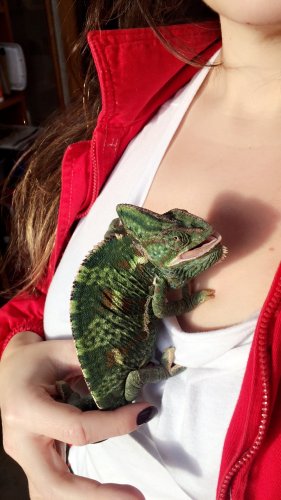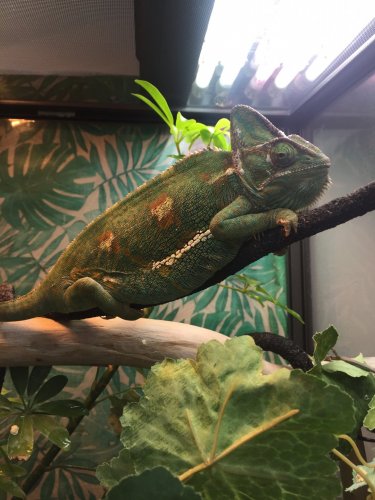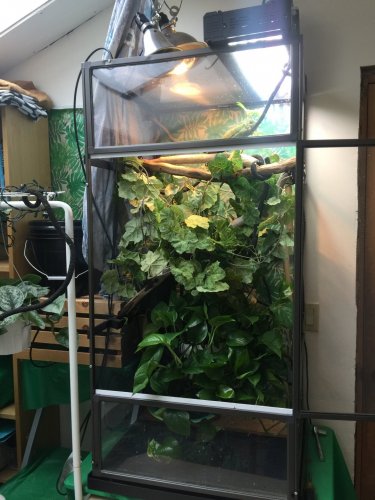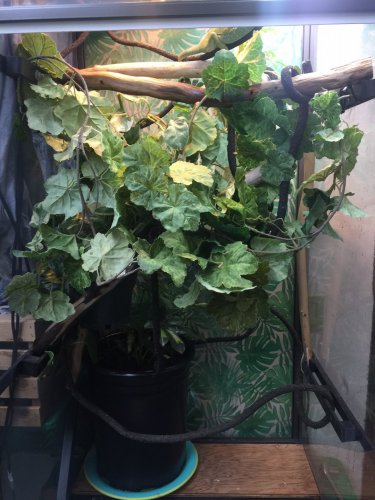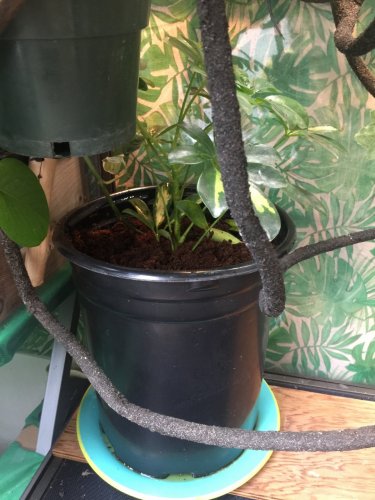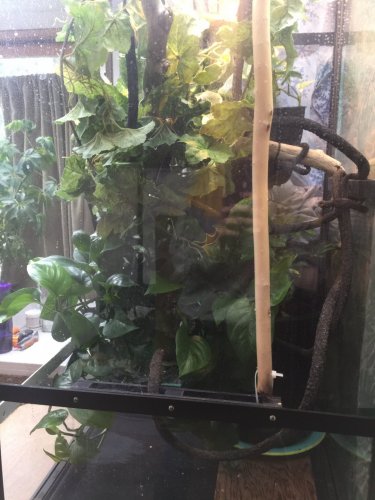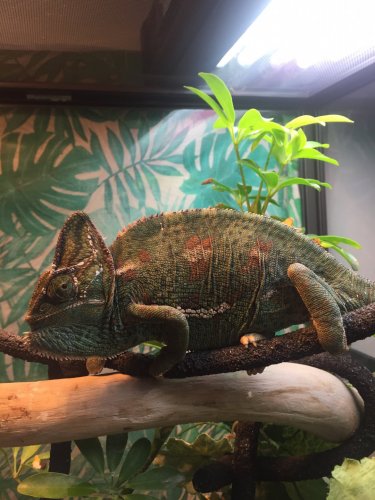thertz
Member
Looks like a long post but my main problem is: My female veiled is a little over 2 years old and has yet to lay eggs, or even express any interest in it. I have a potted umbrella plant at the bottom of the cage 12"D of soil.
She is still eating and drinking, although her skin (for the past few months is always somewhat wrinkly and dehydrated (not terrible, eyes are normal, I see her drink). I took her to the vet for sub q fluids a couple times but that didn't change her skin much. The vet also felt her for eggs and felt nothing. She didn't seem very concerned which makes me think I could be overreacting, but she also didn't give me any clue about when she will/should lay eggs, or what I should be doing differently (bin-wise and hydration-wise).
I'm not a very experienced owner (she was given to me as a gift), but I love her to death and have done my research, put in the daily work, bought her cream of the crop everything:
CAGE: 2x2x4 dragon strand clear side enclosure with one side and top mesh.
WATER: dripper and Mistking: 9am 6 min, 12pm 5 min, 6pm 6 min (I read in a thread that it's better to do fewer mistings for longer and I originally had much longer duration times but it was too much)
LIGHTING: Arcadia T5 UVB + plant tube lamps, 150W ceramic heat emitter (24hrs), 125W basking bulb usually, and using an even hotter one now because it's such a struggle to heat the cage in the winter, and my vet told me my basking area needs to be 90-100. I'm changing it back to the 125W today in case it has something to do with her dehydration.
PLANTS: pothos, schefflera, sticks, and fake vines
FOOD: about 10 med-large crickets/day (sometimes i mix it up and give her a little less or a little more or skip a day)- crickets fed Flukers calcium hydration cubes, Repashy gutload (gel form), and random produce (spinach, sweet potato, carrots etc). Mealworms once in a while, but she likes to hunt the crickets and I think it's good exercise.
SUPPLEMENTS: crickets dusted with calcium daily, D3 2x/mo, multivitamin 1/mo
HEALTH: She came with nasty parasites that took 3 months to get rid of so I've checked about 3 times since then and she's in the clear. I am VERY stressed and concerned about her right now but the vet doesn't seem to be.
CURRENT BEHAVIOR: Eating and drinking, mostly basking but moves around the cage, almost never goes to the bottom. Normal BMs. She's like a sourpatch kid sour then sweet and always has been. The only weird thing I notice is that she looks a little weak sometimes- not always, but I'll see her kind of leaning sideways as if she can't hold herself up and she does that in my hands too, but she can still move around so once again I may be overreacting.
This is my first post sorry for the length! I"m just kind of freaking out.
She is still eating and drinking, although her skin (for the past few months is always somewhat wrinkly and dehydrated (not terrible, eyes are normal, I see her drink). I took her to the vet for sub q fluids a couple times but that didn't change her skin much. The vet also felt her for eggs and felt nothing. She didn't seem very concerned which makes me think I could be overreacting, but she also didn't give me any clue about when she will/should lay eggs, or what I should be doing differently (bin-wise and hydration-wise).
I'm not a very experienced owner (she was given to me as a gift), but I love her to death and have done my research, put in the daily work, bought her cream of the crop everything:
CAGE: 2x2x4 dragon strand clear side enclosure with one side and top mesh.
WATER: dripper and Mistking: 9am 6 min, 12pm 5 min, 6pm 6 min (I read in a thread that it's better to do fewer mistings for longer and I originally had much longer duration times but it was too much)
LIGHTING: Arcadia T5 UVB + plant tube lamps, 150W ceramic heat emitter (24hrs), 125W basking bulb usually, and using an even hotter one now because it's such a struggle to heat the cage in the winter, and my vet told me my basking area needs to be 90-100. I'm changing it back to the 125W today in case it has something to do with her dehydration.
PLANTS: pothos, schefflera, sticks, and fake vines
FOOD: about 10 med-large crickets/day (sometimes i mix it up and give her a little less or a little more or skip a day)- crickets fed Flukers calcium hydration cubes, Repashy gutload (gel form), and random produce (spinach, sweet potato, carrots etc). Mealworms once in a while, but she likes to hunt the crickets and I think it's good exercise.
SUPPLEMENTS: crickets dusted with calcium daily, D3 2x/mo, multivitamin 1/mo
HEALTH: She came with nasty parasites that took 3 months to get rid of so I've checked about 3 times since then and she's in the clear. I am VERY stressed and concerned about her right now but the vet doesn't seem to be.
CURRENT BEHAVIOR: Eating and drinking, mostly basking but moves around the cage, almost never goes to the bottom. Normal BMs. She's like a sourpatch kid sour then sweet and always has been. The only weird thing I notice is that she looks a little weak sometimes- not always, but I'll see her kind of leaning sideways as if she can't hold herself up and she does that in my hands too, but she can still move around so once again I may be overreacting.
This is my first post sorry for the length! I"m just kind of freaking out.






